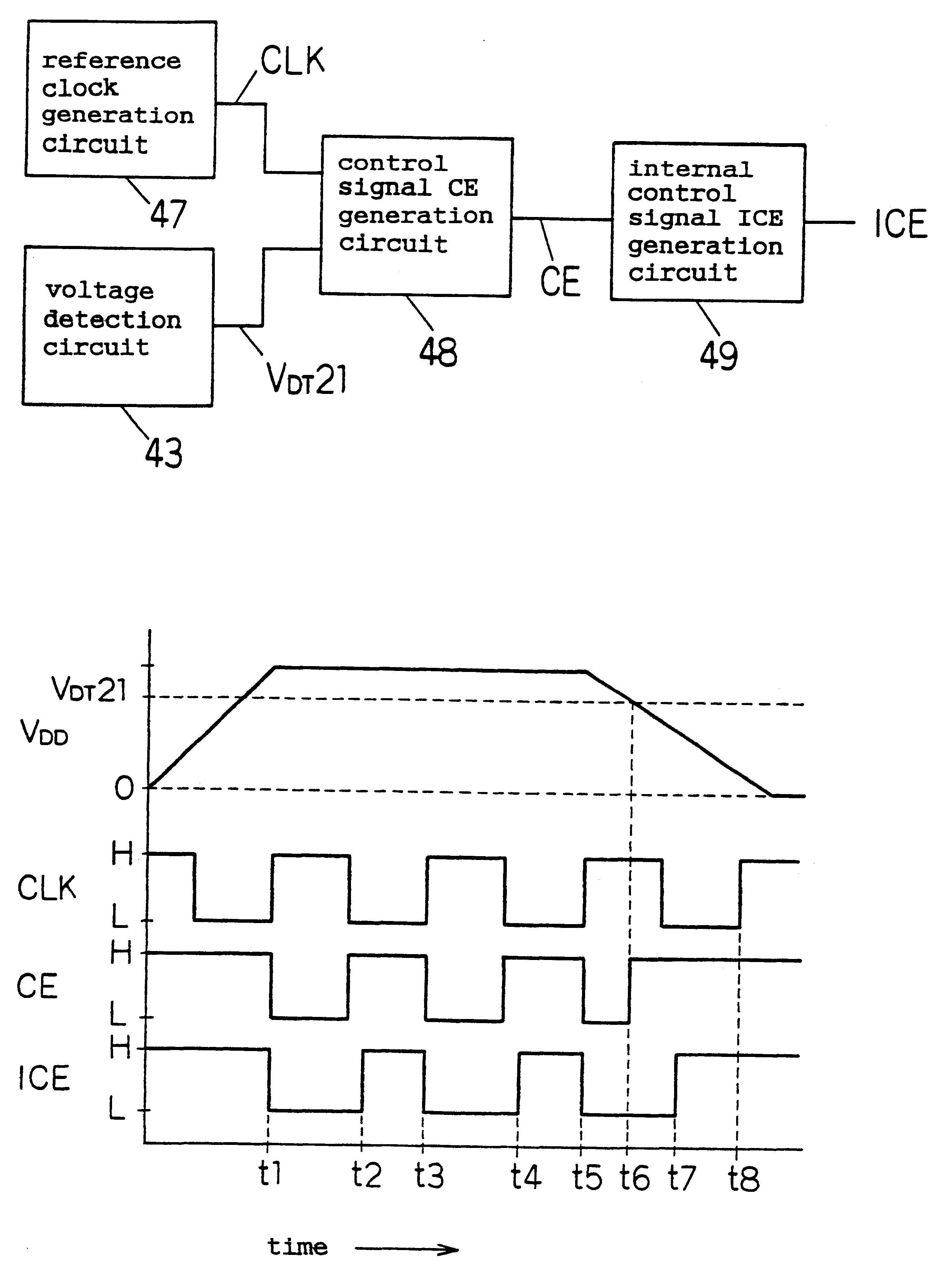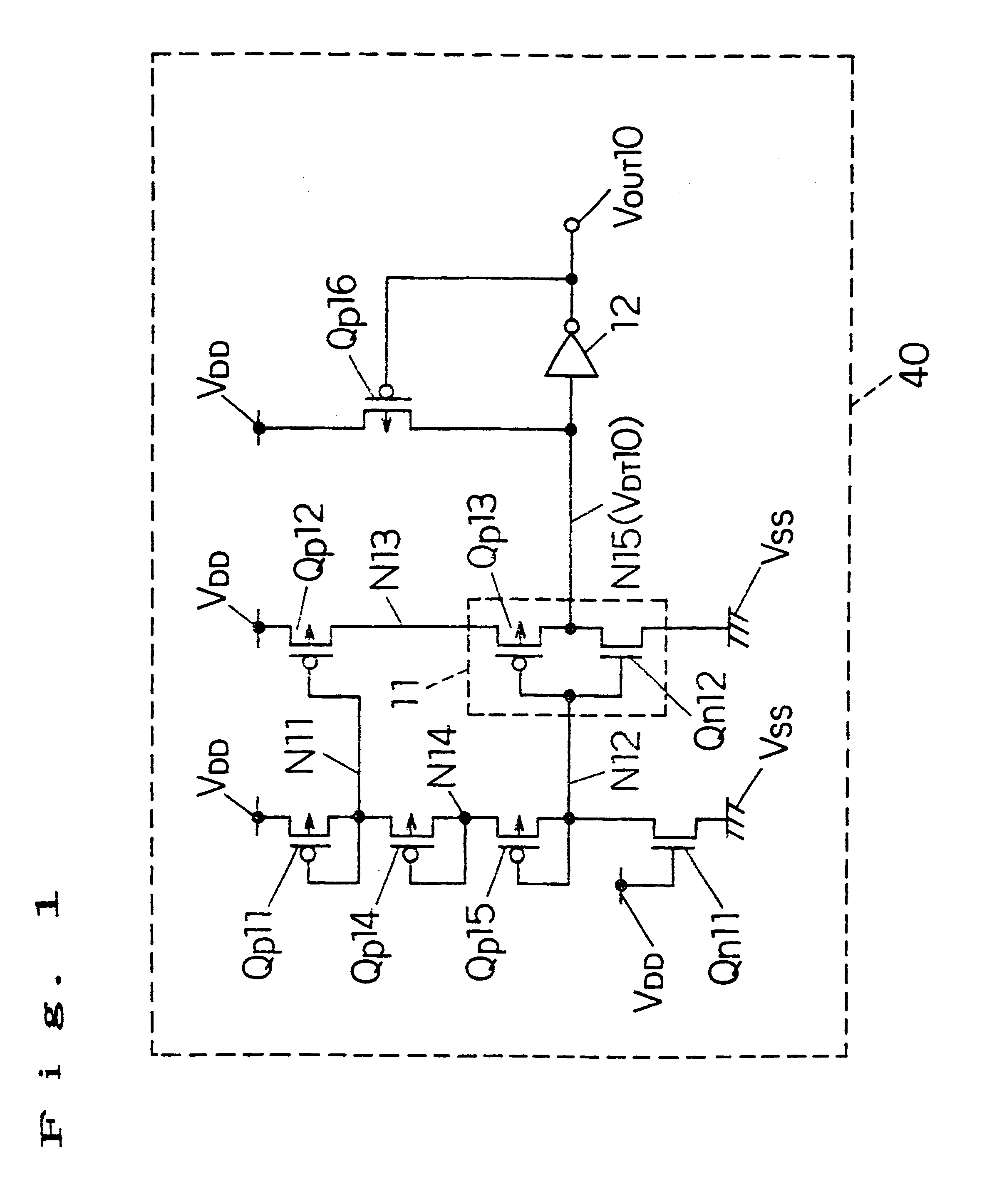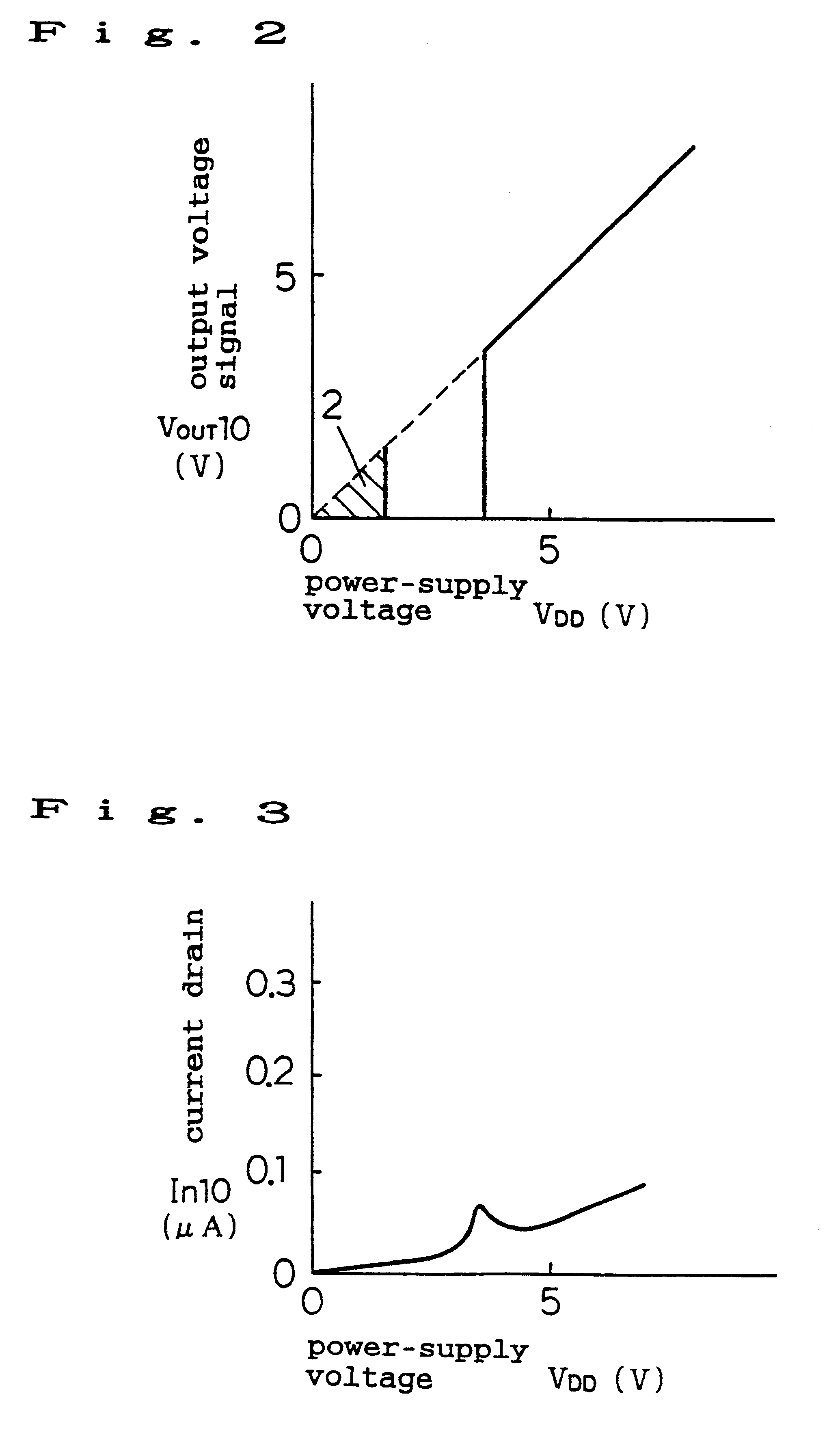Voltage detection circuit power-on/off reset circuit and semiconductor device
a voltage detection circuit and power-on/off reset technology, applied in the direction of current/voltage detection, instruments, pulse techniques, etc., can solve the problems of difficult to properly terminate a sequence in operation, the memory data is destroyed in the memory circuit when the operation is immediately suspended, so as to prevent the wrong operation of non-volatile memory and stable voltage detection signal
- Summary
- Abstract
- Description
- Claims
- Application Information
AI Technical Summary
Benefits of technology
Problems solved by technology
Method used
Image
Examples
embodiments 1
(Embodiments 1)
FIG. 1 shows the construction of the voltage detection circuit of the first embodiment of the present invention (corresponding to claims 1, 2, and 3). FIG. 2 shows the relationship between the power-supply voltage and the output voltage signal, and FIG. 3 shows the relationship between the power-supply voltage and the current drain.
The construction of the present embodiment will be explained hereinafter. In FIG. 1, Qp 11-Qp 16 are P-channel type MOS transistors, Qn 11 and Qn 12 are N-channel type MOS transistors, and 11 and 12 are NOT circuits.
The source of the P-channel type MOS transistor Qp 11 is connected with the power-supply voltage VDD, and its gate and drain are connected with the node N 11. The source of the P-channel type MOS transistor Qp 12 is connected with the power-supply voltage VDD, and its gate and drain are connected with the node N 11 and the node N 13, respectively. The P-channel type MOS transistors Qp 14 and Qp 15 are connected with each other i...
embodiment 2
(Embodiment 2)
FIG. 4 shows the construction of the voltage detection circuit of the second embodiment of the present invention (corresponding to claim 4).
In the present embodiment, a voltage detection circuit 41 which can detect a lower voltage than in the first embodiment is added, the output signal VDT 20 whose logical voltage is "H" is supplied to the gate of the P-channel type MOS transistor Qp 17 at the low voltage of the voltage detection circuit 41, and this transistor Qp 17 is connected between the node N 15 and the power-supply voltage VDD. The present embodiment can prevent the circuit of FIG. 1 from becoming unstable at around 1.5V shown in FIG. 2.
As a result, this circuit can achieve a stable operation at a low voltage especially when the power supply is turned on, by means of a signal from a voltage detection circuit which detects a lower voltage than the voltage of the circuit itself.
embodiment 3
(Embodiment 3)
FIG. 5 shows the construction of the voltage detection circuit of the third embodiment of the present invention (corresponding to claims 5 and 6) , and FIG. 6 shows the waveform of the output signal when the power supply is turned on.
The present embodiment can be used in the voltage detection circuit 41 of the second embodiment.
The sources of the P-channel type MOS transistors Qp 21-Qp 24, the gates of the transistors Qp 21 and Qp 24 are connected with the power-supply voltage VDD. The drains of the transistors Qp 21-Qp 22 and the gates of the transistors Qp 22-Qp23 are connected with the node N 21. The drains of the transistors Qp 23-Qp24 are connected with the node N 23. The source of the P-channel type MOS transistor Qp 25 is connected with the node N 21, and its gate and drain are connected with the node N 22. A resistance R 21 is connected between the node N 22 and the ground voltage VSS. The N-channel type MOS transistor Qn 21 whose gate is the node N 23 is conne...
PUM
 Login to View More
Login to View More Abstract
Description
Claims
Application Information
 Login to View More
Login to View More - R&D
- Intellectual Property
- Life Sciences
- Materials
- Tech Scout
- Unparalleled Data Quality
- Higher Quality Content
- 60% Fewer Hallucinations
Browse by: Latest US Patents, China's latest patents, Technical Efficacy Thesaurus, Application Domain, Technology Topic, Popular Technical Reports.
© 2025 PatSnap. All rights reserved.Legal|Privacy policy|Modern Slavery Act Transparency Statement|Sitemap|About US| Contact US: help@patsnap.com



